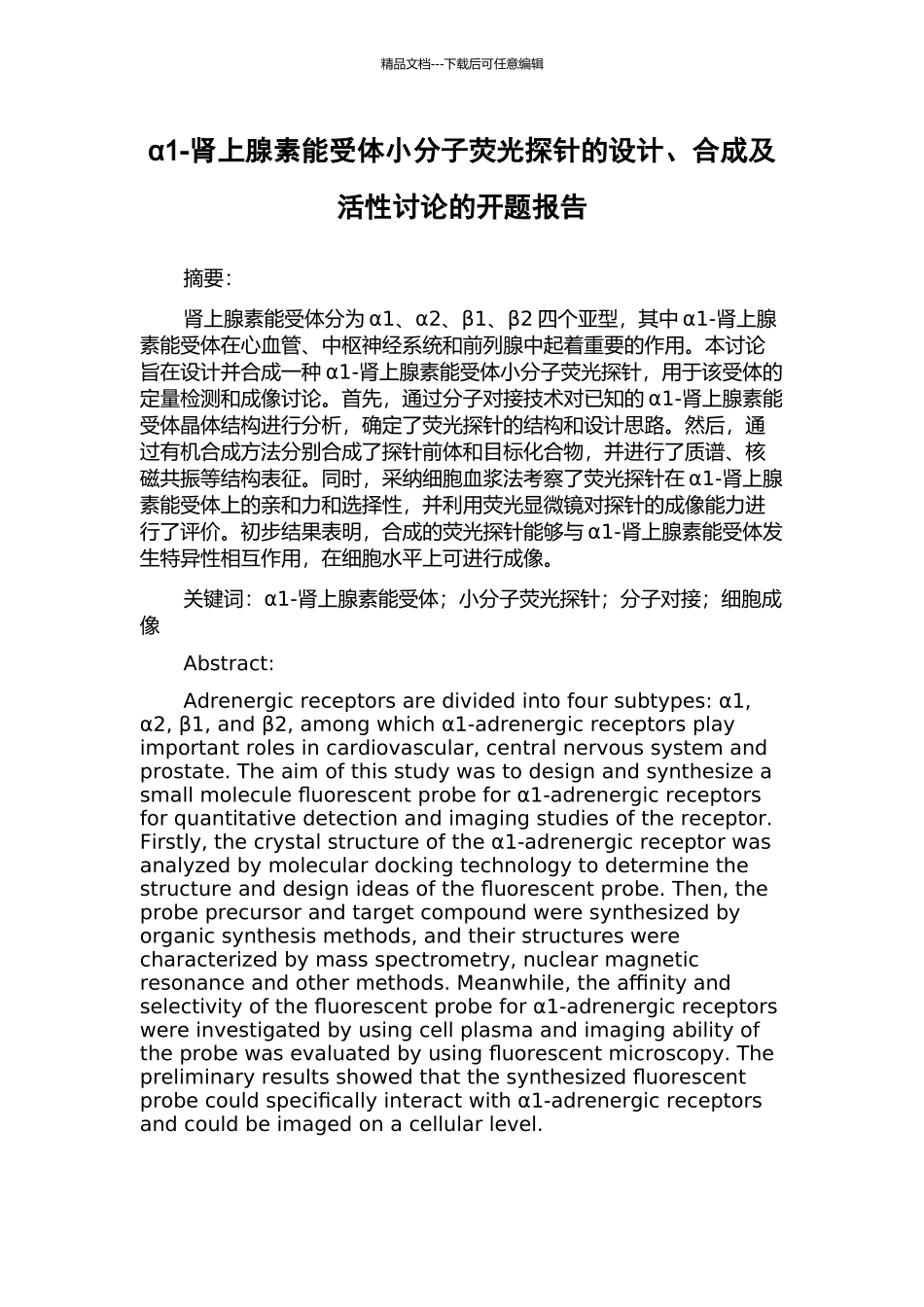精品文档---下载后可任意编辑α1-肾上腺素能受体小分子荧光探针的设计、合成及活性讨论的开题报告摘要:肾上腺素能受体分为 α1、α2、β1、β2 四个亚型,其中 α1-肾上腺素能受体在心血管、中枢神经系统和前列腺中起着重要的作用。本讨论旨在设计并合成一种 α1-肾上腺素能受体小分子荧光探针,用于该受体的定量检测和成像讨论。首先,通过分子对接技术对已知的 α1-肾上腺素能受体晶体结构进行分析,确定了荧光探针的结构和设计思路。然后,通过有机合成方法分别合成了探针前体和目标化合物,并进行了质谱、核磁共振等结构表征。同时,采纳细胞血浆法考察了荧光探针在 α1-肾上腺素能受体上的亲和力和选择性,并利用荧光显微镜对探针的成像能力进行了评价。初步结果表明,合成的荧光探针能够与 α1-肾上腺素能受体发生特异性相互作用,在细胞水平上可进行成像。关键词:α1-肾上腺素能受体;小分子荧光探针;分子对接;细胞成像Abstract:Adrenergic receptors are divided into four subtypes: α1, α2, β1, and β2, among which α1-adrenergic receptors play important roles in cardiovascular, central nervous system and prostate. The aim of this study was to design and synthesize a small molecule fluorescent probe for α1-adrenergic receptors for quantitative detection and imaging studies of the receptor. Firstly, the crystal structure of the α1-adrenergic receptor was analyzed by molecular docking technology to determine the structure and design ideas of the fluorescent probe. Then, the probe precursor and target compound were synthesized by organic synthesis methods, and their structures were characterized by mass spectrometry, nuclear magnetic resonance and other methods. Meanwhile, the affinity and selectivity of the fluorescent probe for α1-adrenergic receptors were investigated by using cell plasma and imaging ability of the probe was evaluated by using fluorescent microscopy. The preliminary results showed that the synthesized fluorescent probe could specifically interact with α1-adrenergic receptors and could be imaged on a cellular level.精品文档---下载后可任意编辑Keywords: α1-adrenergic receptor; small molecule fluorescent probe; molecular docking; cell imaging.

